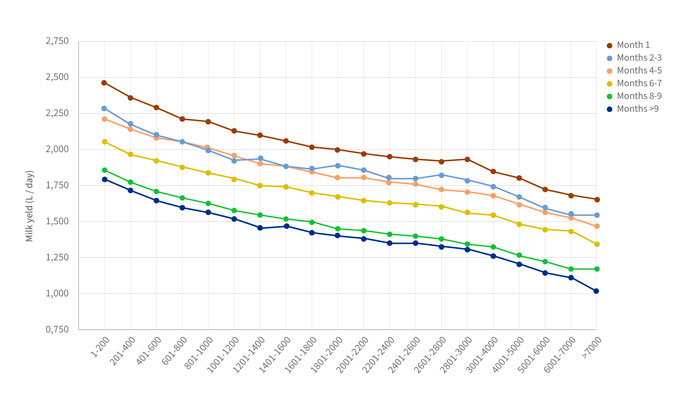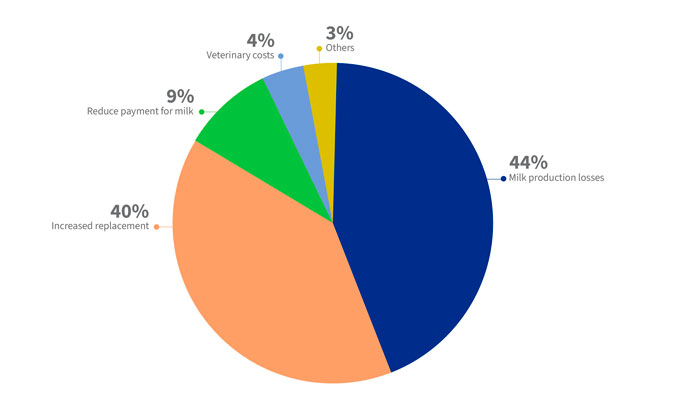Visible costs
The most obvious losses are caused by clinical mastitis. In sheep and goats, this type of mastitis tends to occur during the first 3 months of lactation and is usually acute.
This leads to high production losses (falls in production in excess of 70%) and a high number of casualties, as mastitis is rarely treatable and usually results in the death or slaughter of the animal.
However, as sub-clinical mastitis is much more common, it is important not to disregard the costs that this will cause. In this case, the main cost stems from a decrease in production, which on average falls by 13% (Martí de Olives et al.).
“Clinical mastitis leads to a drop in production of more than 70% and usually results in the death or slaughter of the animal”
Somatic cells help to give us an idea of the losses incurred as a result of mastitis. In the case of goats, the curve in the graph in Figure 1 and Table 1 (Pleguezuelos at al.) show that production drops by more than 11% in goats with 1 million cells, and by almost 20% in goats with 2 million cells.

| SOMATIC CELL COUNT | SHEEP | GOATS |
|---|---|---|
| 1.000.000 | -14,1% | -11,4% |
| 2.000.000 | -21,1% | -19,5% |
| 3.000.000 | -25,20% | -24,2% |
Table 1. Estimation of production losses in sheep and goats according to somatic cell count.
According to Gonzalo et al., the situation is similar in sheep, as shown in Table 1 and Figure 2. Production can drop by more than 14% in ewes with over one million somatic cells, and by more than 20% in ewes with more than 2 million cells.

Hidden costs
This lower production from sub-clinically infected animals means that they have to be replaced earlier than expected, thus increasing the replacement rate.

Moreover, it gives rise to poorer quality milk with a higher somatic cell count, a greater bacteriological count and an imbalance in the composition of protein and fat (Leitner et al). These modifications involve penalties in the payment of milk in most countries and also affect the growth of lambs and kids. Lambs born from infected mothers will take longer to grow (Moroni et al.)
“Mastitis causes changes in the quality and composition of milk, resulting in penalties and significantly reduced growth in lambs and kids”
The replacement of all animals with abnormalities is one of the highest costs of mastitis.
Finally, the labour costs, the treatments required on some occasions and the discarding of milk in the event of treatment all contribute to the total losses caused by this disease.

Mean cost
“The cost of each case of clinical mastitis exceeds €300; the cost per sheep or goat with sub-clinical mastitis is in the region of €80”
The cost of mastitis in dairy sheep or goats exceeds €300 per case, while one case of sub-clinical mastitis may be around €80. The cost for one farm usually exceeds €50 euros on average per animal on the farm.
It is therefore essential to implement a mastitis control programme that combines management measures with vaccination.




